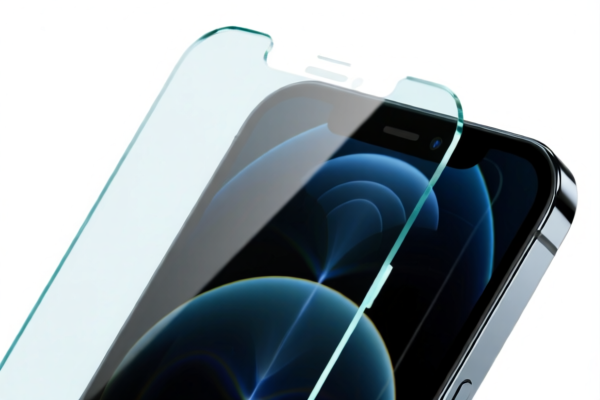| HS Code | Official Doc | Tariff Rate | Origin | Destination | Effective Date |
|---|---|---|---|---|---|
| 9001908000 | Doc | 55.0% | CN | US | 2025-05-12 |
| 9001909000 | Doc | 55.0% | CN | US | 2025-05-12 |
| 8544499000 | Doc | 58.9% | CN | US | 2025-05-12 |
| 9033009000 | Doc | 59.4% | CN | US | 2025-05-12 |
| 9033002000 | Doc | 55.0% | CN | US | 2025-05-12 |
| 3919102055 | Doc | 60.8% | CN | US | 2025-05-12 |
| 3919905060 | Doc | 60.8% | CN | US | 2025-05-12 |
| 3921904010 | Doc | 34.2% | CN | US | 2025-05-12 |
| 3921905010 | Doc | 34.8% | CN | US | 2025-05-12 |
| 8517790000 | Doc | 62.5% | CN | US | 2025-05-12 |
| 8537108000 | Doc | 55.0% | CN | US | 2025-05-12 |
| 8537109170 | Doc | 57.7% | CN | US | 2025-05-12 |
| 8535908060 | Doc | 57.7% | CN | US | 2025-05-12 |
| 8548000000 | Doc | 55.0% | CN | US | 2025-05-12 |
| 7009100000 | Doc | 58.9% | CN | US | 2025-05-12 |




Cellphone Screen Protector
A cellphone screen protector is a thin film or sheet of material applied to the display surface of a cellphone to protect it from scratches, cracks, and other damage.
Material
Screen protectors are commonly made from the following materials:
- Thermoplastic Polyurethane (TPU): A flexible plastic offering good impact resistance and scratch protection. TPU protectors are generally less expensive but may have lower clarity and be more prone to stretching or tearing over time.
- Polyethylene Terephthalate (PET): A less expensive plastic that provides basic scratch protection. PET protectors are thinner and offer less impact resistance than TPU.
- Tempered Glass: A chemically strengthened glass offering high impact and scratch resistance. Tempered glass protectors are more expensive but provide superior protection and clarity, closely resembling the feel of the phone’s original screen. They are generally more resistant to shattering.
- Hydrogel: A newer type of protector made from a gel-like material. Hydrogel protectors offer self-healing properties for minor scratches, excellent flexibility, and good impact resistance. They often provide full-screen coverage, including curved edges.
Purpose
The primary purpose of a cellphone screen protector is to extend the lifespan of the cellphone’s display by shielding it from:
- Scratches: From keys, coins, and other abrasive materials.
- Cracks: From drops and impacts.
- Smudges and Fingerprints: Some protectors have oleophobic coatings to reduce these.
- Damage from liquids: Some protectors offer limited water resistance.
Function
Screen protectors function by absorbing and dispersing impact energy and acting as a sacrificial layer that absorbs damage instead of the phone’s screen. They also provide a smoother surface for touch sensitivity and reduce glare.
Usage Scenarios
Screen protectors are beneficial in a wide range of scenarios:
- Everyday Use: Protecting against scratches from daily activities.
- Outdoor Activities: Protecting against scratches and impacts during hiking, camping, or sports.
- Work Environments: Protecting against damage in construction, manufacturing, or other demanding jobs.
- For users prone to dropping their phones: Providing an extra layer of protection against accidental damage.
Common Types
- Film Protectors (PET): Thin, inexpensive, and easy to apply. Offer basic scratch protection.
- TPU Protectors: More flexible and impact-resistant than film protectors. Often self-healing for minor scratches.
- Tempered Glass Protectors: Offer the highest level of protection and clarity. Available in various thicknesses and with different coatings (e.g., anti-glare, anti-fingerprint).
- Liquid Screen Protectors: Applied as a liquid that hardens on the screen. Offer limited scratch resistance and are less effective against impacts than film or glass protectors.
- Privacy Protectors: Tempered glass protectors with a filter that limits viewing angles, preventing others from seeing the screen content.
- Blue Light Filtering Protectors: Tempered glass protectors designed to reduce the amount of blue light emitted by the screen, potentially reducing eye strain.
- Full-Coverage Protectors: Designed to cover the entire front of the phone, including curved edges.
- Anti-Glare Protectors: Designed to reduce reflections and glare, improving visibility in bright sunlight.
The declared goods, cellphone screen protector, can be classified under the following HS codes based on the provided reference material:
- 3919.10.20.55: This HS code falls under Chapter 39, which covers plastics and articles thereof. Specifically, it refers to self-adhesive plates, sheets, film, foil, tape, strip and other flat shapes, of plastics, whether or not in rolls, with a width not exceeding 20 cm. The subheading .20.55 denotes “Other” within this category. This is applicable if the screen protector is made of plastic and supplied in rolls less than 20cm wide. The applicable tax detail is: 基础关税: 5.8%, 加征关税: 25.0%, 2025.4.2后加征关税: 30.0%, with a total tax of 60.8%.
- 3919.90.50.60: Also under Chapter 39 (plastics), this HS code covers self-adhesive plates, sheets, film, foil, tape, strip and other flat shapes, of plastics, whether or not in rolls, categorized as “Other Other”. This is applicable if the screen protector is made of plastic and not specifically covered by 3919.10.20.55. The applicable tax detail is: 基础关税: 5.8%, 加征关税: 25.0%, 2025.4.2后加征关税: 30.0%, with a total tax of 60.8%.
- 7009.10.00.00: This HS code falls under Chapter 70, which covers glass and glass articles. Specifically, it refers to glass, not further processed; glass in sheets, plates, tiles, rods, tubes or other shaped forms, not tempered. This is applicable if the screen protector is made of glass and has not undergone tempering. The applicable tax detail is: 基础关税: 3.9%, 加征关税: 25.0%, 2025.4.2后加征关税: 30.0%, with a total tax of 58.9%.
Regarding these HS codes, it is important to verify the material composition of the screen protector (plastic or glass) to ensure accurate classification.
Customer Reviews
No reviews yet.